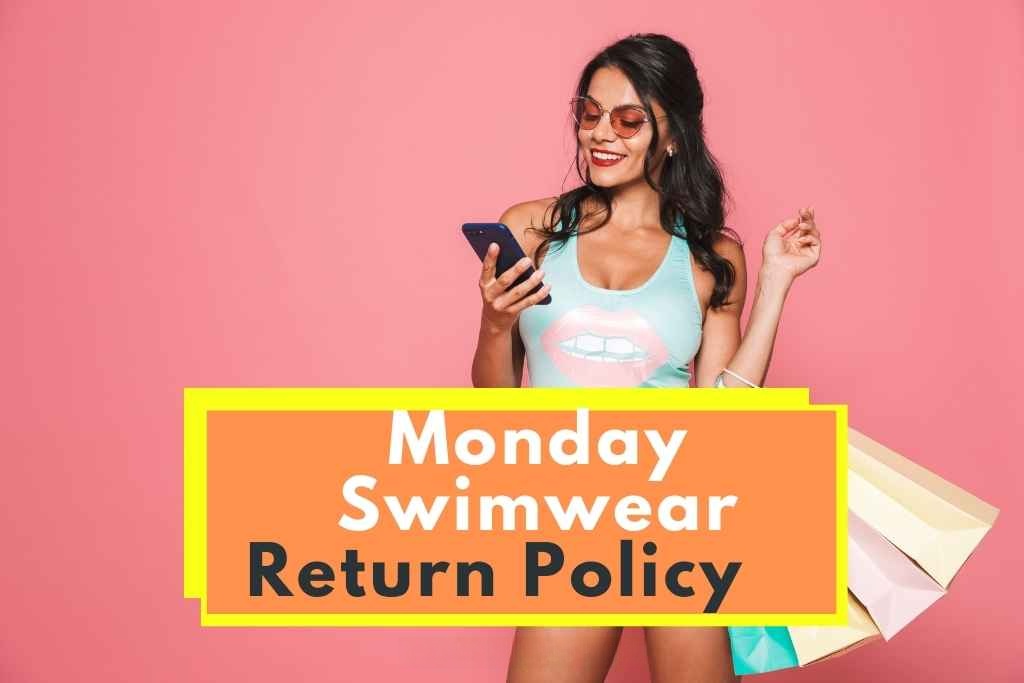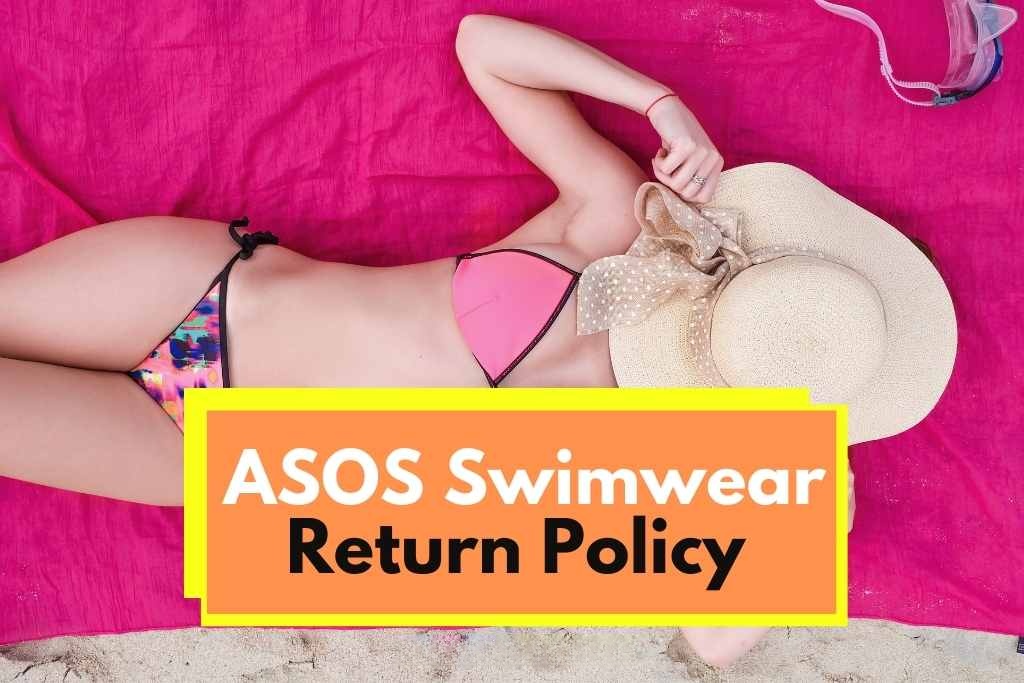Content Menu
● The Importance of Swimwear Return Policies
● General Return Policies for Swimwear
● Retailer-Specific Policies
● Challenges in Swimwear Returns
● Best Practices for Consumers
● Retailer Strategies for Swimwear Returns
● The Future of Swimwear Returns
● Legal Considerations
● The Impact of COVID-19 on Swimwear Returns
● Conclusion
● Frequently Asked Questions
>> 1. Q: Can I return swimwear if I've worn it in water?
>> 2. Q: How long do I typically have to return swimwear?
>> 3. Q: Are there any special considerations for returning online swimwear purchases?
>> 4. Q: Can I return sale or clearance swimwear items?
>> 5. Q: What condition does swimwear need to be in for a return to be accepted?
When the summer season rolls around, many of us find ourselves eagerly shopping for the perfect swimwear. Whether it's for a beach vacation, a pool party, or simply lounging by the water, finding the right swimsuit is crucial for both comfort and confidence. However, the process of purchasing swimwear can be fraught with uncertainty, especially when it comes to the question of returns. Is swimwear returnable? This comprehensive guide will dive deep into the world of swimwear return policies, exploring the nuances, challenges, and considerations that both consumers and retailers face in this unique segment of the fashion industry.

The Importance of Swimwear Return Policies
Swimwear is a category of clothing that presents unique challenges when it comes to returns. Unlike many other garments, swimsuits are often worn in direct contact with the skin and in water, raising hygiene concerns that can complicate return processes. Additionally, the fit of swimwear is crucial, and it's not always easy to determine if a swimsuit will be comfortable or flattering until it's tried on – sometimes even in water.
For consumers, the ability to return swimwear can be a significant factor in their purchasing decisions. The assurance that they can return or exchange an item if it doesn't meet their expectations can encourage more confident buying, potentially leading to increased sales for retailers. On the flip side, retailers must balance customer satisfaction with the practical and financial implications of accepting returns on items that may no longer be in a condition to resell.
General Return Policies for Swimwear
While policies can vary widely between retailers, there are some general trends in swimwear return policies:
1. Unworn Items: Most retailers are willing to accept returns on swimwear that has not been worn, as long as it is returned within a specified timeframe (usually 14 to 30 days) and with original tags and hygiene liners intact.
2. Tried-On Items: Some stores allow returns on swimwear that has been tried on at home, as long as it hasn't been worn in water and all tags and liners are present.
3. Worn Items: Returns on swimwear that has been worn in water are generally not accepted by most retailers due to hygiene concerns.
4. Online vs. In-Store: Policies may differ for items purchased online versus in physical stores, with online purchases sometimes having more lenient return policies to account for the inability to try on items before purchase.
5. Sale Items: Many retailers have stricter return policies for swimwear purchased on sale or clearance, often making these sales final.
Retailer-Specific Policies
Let's take a closer look at how some major retailers handle swimwear returns:
1. Target
Target has one of the more generous return policies when it comes to swimwear. They allow returns for full refunds up to 90 days after purchase, which can be extended to 120 days for those using a Target RedCard. This policy applies to both in-store and online purchases, making it a popular choice for swimwear shoppers.

2. Walmart
Walmart's policy allows for returns on unworn swimwear within 90 days of purchase, provided the items are in new condition with original packaging and tags attached. This policy extends to underwear and intimate apparel as well, which is not always the case with other retailers.
3. SwimOutlet.com
As an online retailer specializing in swimwear, SwimOutlet.com offers a customer-friendly return policy. They provide hassle-free returns through a partnership with Happy Returns, allowing customers to return items easily and receive refunds quickly.
4. Specialty Swimwear Brands
Many specialty swimwear brands have more restrictive return policies. For example, Beach Bunny Swimwear does not accept returns on items purchased more than 14 days prior, items marked as final sale, or accessories such as jewelry, sandals, and hats. They also exclude items purchased with significant discount codes from their return policy.
Challenges in Swimwear Returns
Several factors make swimwear returns a complex issue for both consumers and retailers:
1. Hygiene Concerns: The intimate nature of swimwear raises hygiene issues, especially for items that may have been worn in water.
2. Fit and Sizing: Swimwear fit can be highly personal and difficult to gauge without trying on, leading to higher return rates for online purchases.
3. Seasonal Nature: The seasonal demand for swimwear can make it challenging for retailers to resell returned items, especially late in the season.
4. Material Degradation: Exposure to chlorine, saltwater, or sunscreen can damage swimwear materials, making it difficult to determine if returned items are in resalable condition.
5. Cost of Processing Returns: Handling returns can be expensive for retailers, particularly for lower-priced swimwear items.
Best Practices for Consumers
If you're shopping for swimwear and want to ensure you can return it if necessary, consider the following tips:
1. Read the Return Policy Carefully: Before making a purchase, thoroughly review the retailer's return policy, paying attention to timeframes, condition requirements, and any exceptions for swimwear.
2. Keep All Tags and Packaging: Retain all original tags, hygiene liners, and packaging until you're certain you want to keep the item.
3. Try On Carefully: When trying on swimwear at home, do so over underwear to maintain hygiene standards and avoid damaging the item.
4. Act Quickly: If you decide to return an item, do so as soon as possible within the allowed timeframe.
5. Consider In-Store Purchases: Buying swimwear in-store allows you to try on items before purchase, potentially reducing the need for returns.

Retailer Strategies for Swimwear Returns
For retailers, managing swimwear returns requires a delicate balance between customer satisfaction and business practicality. Here are some strategies that retailers employ:
1. Clear Communication: Prominently displaying return policies in-store and online helps set customer expectations and reduce confusion.
2. Detailed Product Descriptions: Providing comprehensive sizing information, fabric details, and care instructions can help customers make more informed purchases.
3. Virtual Try-On Technology: Some online retailers are implementing virtual fitting rooms or augmented reality tools to help customers visualize how swimwear will look on them.
4. Flexible Return Options: Offering in-store returns for online purchases or providing prepaid return labels can enhance the customer experience.
5. Staff Training: Educating sales staff on proper fit and sizing can help customers make better choices and reduce return rates.
The Future of Swimwear Returns
As technology advances and consumer expectations evolve, the landscape of swimwear returns is likely to change. Some potential developments include:
1. Improved Sizing Technology: Advanced body scanning and AI-driven sizing recommendations could lead to more accurate fits and fewer returns.
2. Sustainable Return Practices: As environmental concerns grow, retailers may implement more eco-friendly return processes or incentivize fewer returns.
3. Personalized Swimwear: The rise of made-to-order or customizable swimwear could reduce fit-related returns but may require different return policies.
4. Extended Try-On Periods: Some retailers might experiment with longer try-on periods for swimwear, allowing customers to test items in water before deciding to keep them.
Legal Considerations
It's worth noting that return policies are subject to legal regulations in many jurisdictions. For example, in California, retailers are required by law to inform consumers of their return policy through prominent signage if it differs from a standard seven-day return window. Understanding these legal requirements is crucial for both retailers and consumers.
The Impact of COVID-19 on Swimwear Returns
The global pandemic has had a significant impact on retail practices, including return policies. Many retailers extended their return windows during lockdowns and implemented contactless return processes. As the situation evolves, we may see lasting changes in how swimwear returns are handled, with an increased emphasis on hygiene and safety.

Conclusion
The question "Is swimwear returnable?" doesn't have a simple yes or no answer. While many retailers do accept swimwear returns under certain conditions, policies vary widely and are subject to numerous factors. As a consumer, it's crucial to understand the return policy before making a purchase and to handle swimwear carefully if you think you might need to return it. For retailers, crafting a fair and clear return policy for swimwear is essential for customer satisfaction and business success.
Ultimately, the key to navigating swimwear returns lies in clear communication between retailers and consumers, coupled with thoughtful shopping practices. As the retail landscape continues to evolve, we can expect to see innovations in how swimwear returns are handled, potentially leading to a more seamless and satisfying experience for all parties involved.
[在这里插入相关的图片和视频]
Frequently Asked Questions
1. Q: Can I return swimwear if I've worn it in water?
A: Generally, most retailers do not accept returns on swimwear that has been worn in water due to hygiene concerns. However, policies can vary, so it's best to check with the specific retailer.
2. Q: How long do I typically have to return swimwear?
A: Return windows for swimwear usually range from 14 to 90 days, depending on the retailer. Some stores like Target offer extended return periods of up to 90 days.
3. Q: Are there any special considerations for returning online swimwear purchases?
A: Online purchases often have more lenient return policies to account for the inability to try on items before buying. Many retailers offer free returns for online swimwear purchases.
4. Q: Can I return sale or clearance swimwear items?
A: Many retailers have stricter policies for sale or clearance items, often marking them as final sale. Always check the specific policy for discounted swimwear.
5. Q: What condition does swimwear need to be in for a return to be accepted?
A: Most retailers require swimwear to be unworn, with all original tags and hygiene liners intact. The item should be in its original packaging and free from any signs of wear or damage.





































